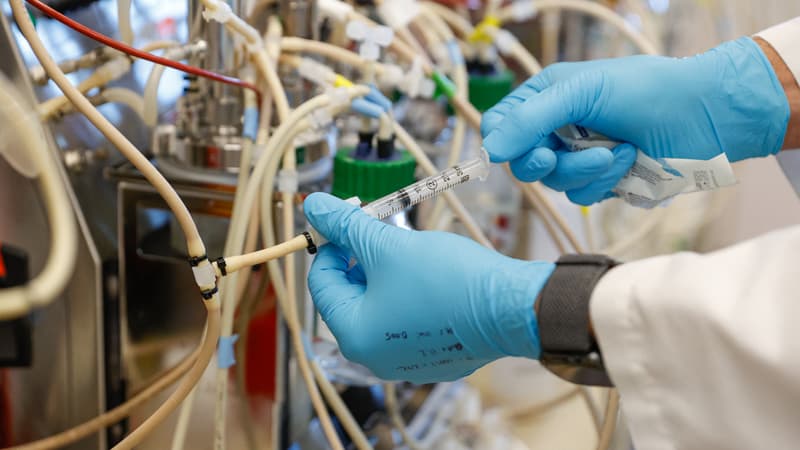In the dozens of vials in the laboratory of the LanzaTech company, on the outskirts of Chicago, a beige liquid continuously bubbles: billions of tiny bacteria fill up with gas, which they ingest to recycle it. Thanks to the technology developed here, three Chinese factories are already using these microorganisms to convert the greenhouse gases they emit into ethanol.
Later, thanks to alliances with major brands such as Zara or L’Oréal, this ethanol is transformed into everyday products: bottles, household products, sports shorts or even dresses. “Obviously I wouldn’t have thought 14 years ago that we would bring cocktail dresses to market out of steel mill emissions,” laughs Michael Köpke, who joined LanzaTech very early on.
This company is the only American among the 15 finalists for the Earthshot award, created by Prince William to reward initiatives in favor of the climate. Winners will be announced on Friday. Since its launch, LanzaTech and its 200 employees claim to have prevented the emission of 200,000 tons of CO2 into the atmosphere, instead producing some 190 million liters of ethanol. A “drop of water” compared to the amounts needed to fight climate change, concedes Michael Köpke, a microbiologist.
In freeze-dried powder form
But after having spent 15 years developing this technique and demonstrating its viability on a large scale, the ambition today is to multiply the participating factories. “We want to get to a point where we only use the carbon already removed from the ground, to keep it in circulation,” rather than extracting more oil and gas, explains Michael Köpke.
LanzaTech compares its technology to the design of beer: instead of fermenting sugar, here the raw material is greenhouse gases and the final product is ethanol. The commercial bacterium was identified decades ago in rabbit feces. The company placed him in industrial conditions to optimize his performance, “a bit like training an athlete,” compares Michael Köpke.
These bacteria are then sent in the form of lyophilized powder to the factories, which are in charge of building reactors several meters high where they will be dumped. These corporate customers will later reap the rewards of ethanol sales. The Chinese sites are one steel plant and two ferroalloy plants. Six other sites are under construction, including one in Belgium for an ArcelorMittal plant and another in India with the Indian Oil Company.
Since the bacteria can ingest CO2, carbon monoxide, or hydrogen, the process is very “flexible,” more so than “any other gas conversion technology,” explains Zara Summers, LanzaTech’s vice president of science. The raw material can be “garbage” that is gasified, “agricultural residues or the gases released by any heavy industry,” she explains.
Two collections of dresses for Zara
The different collaborations established have already made it possible to create, from these gases, products for the home that are sold on the shelves of the large supermarket chain Migros, or even two collections of dresses for Zara. Sold for around 90 dollars, they are made with polyester from 20% of the captured gases. According to Zara Summers, humanity “will always need carbon”, but “in the future, the idea is that it is no longer lost. (…) Instead of releasing it into the atmosphere, we are going to do it in products”.
LanzaTech has also founded an independent company, Lanzajet, to use the ethanol generated as aviation fuel (“sustainable aviation fuel”, SAF). Increasing the global production of sustainable fuel is a great challenge for this sector, which seeks to “green” itself. The company’s goal is to produce about 3.8 billion cubic meters of fuel a year by 2030. Unlike bioethanol produced from wheat, beets or corn, gas bioethanol does not replace crops.
For LanzaTech, the next challenge is to commercialize bacteria that produce products other than ethanol. Thus, thousands of different strains are tested in their laboratories. “We have already shown that we can produce more than 100 chemicals,” explains Michael Köpke.
He is especially enthusiastic about the idea, still under development, of being able to transform gases directly into ethylene, “the most widely used chemical product in the world” (for bottles, containers, etc.), whose production today generates “almost as much” CO2 as the aviation. Currently, LanzaTech’s ethanol must be converted to polyethylene, but that step could be skipped and save even more energy.
Source: BFM TV


